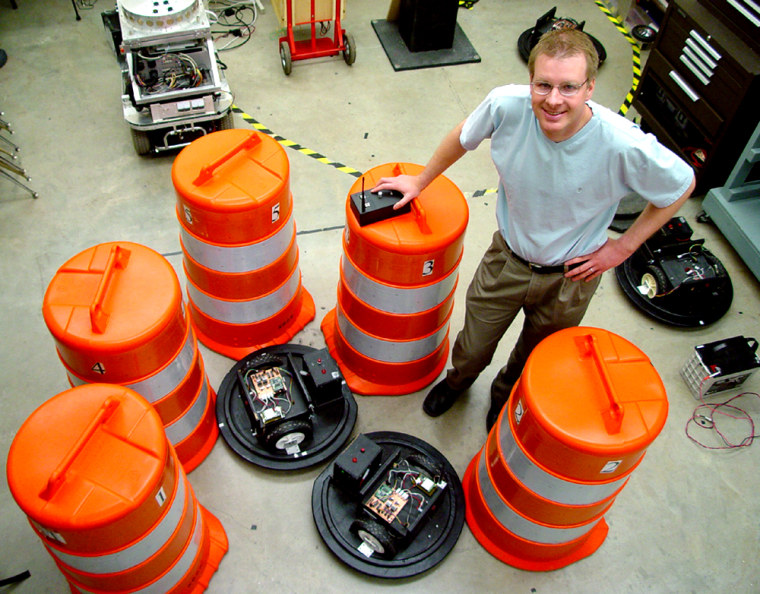Did those orange construction cones just scuttle across the road? It’s not a hallucination or the work of a stiff breeze, but the vision of one inventor.
A University of Nebraska-Lincoln professor has developed robotic cones and barrels that can move out of the way, or into place, from computer commands made miles away.
They can even be programmed to move on their own at any particular part of the day, said Shane Farritor, assistant professor of mechanical engineering.
For example, if workers arrived at 6 a.m., the cones could move from the shoulder to block off the lane at that time, then return to the side of the highway at the end of the day.
“It just seems like a very good application for robots,” Farritor said Thursday.
Reduce hazard to humans
The robotic cones would also help remove people from hazardous jobs on the highway putting barrels and cones into place, Farritor said in a report on his creation.
While prototypes have been made, they are not in use anywhere. Farritor said he has applied for a patent and is considering what to do next. The prototypes cost an estimated $700 each.
Work on the idea began in 2002 using a National Academy of Sciences grant. Farritor worked on the project with graduate students and computer science assistant professor Steve Goddard.
Not much visual difference
The robots are placed at the bottom of the cones and barrels and are small enough not to greatly alter the appearance of the construction aids.
“It would look exactly the same,” Farritor said. “Normally there’s a kind of rubbery, black base to them. We replace that with a robot.”
The robots could come in handy following a slow-moving maintenance operation, like painting a stripe on a road or moving asphalt, where now the barrels have to be picked up and moved as the operation proceeds, Farritor said.
“That way you don’t have to block off a 10-mile strip,” he said.
